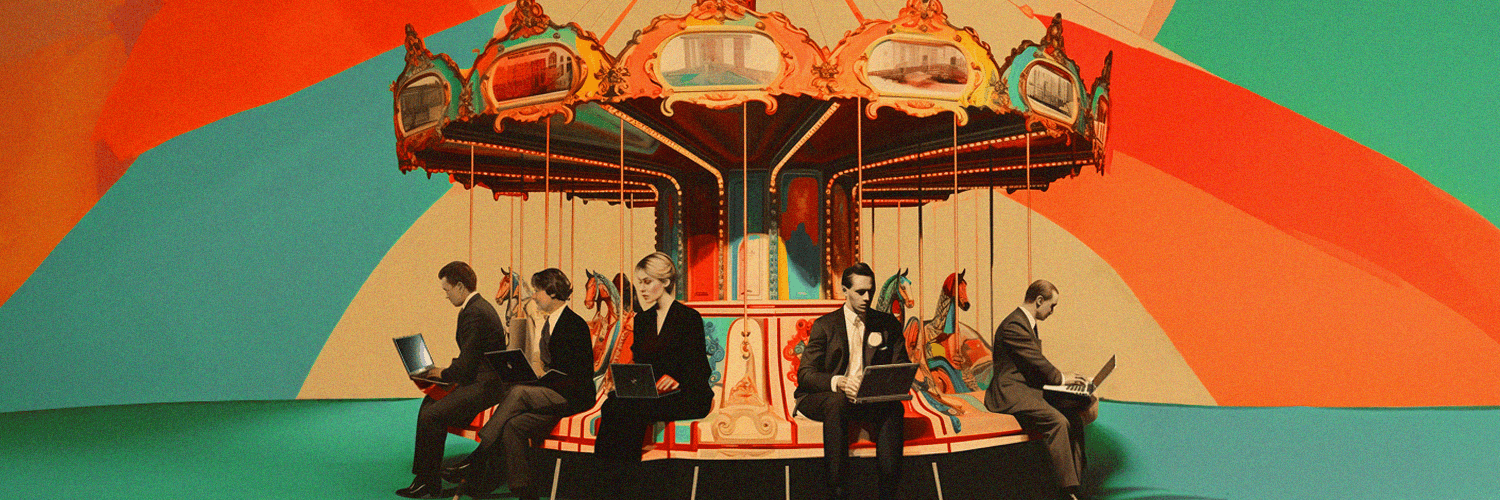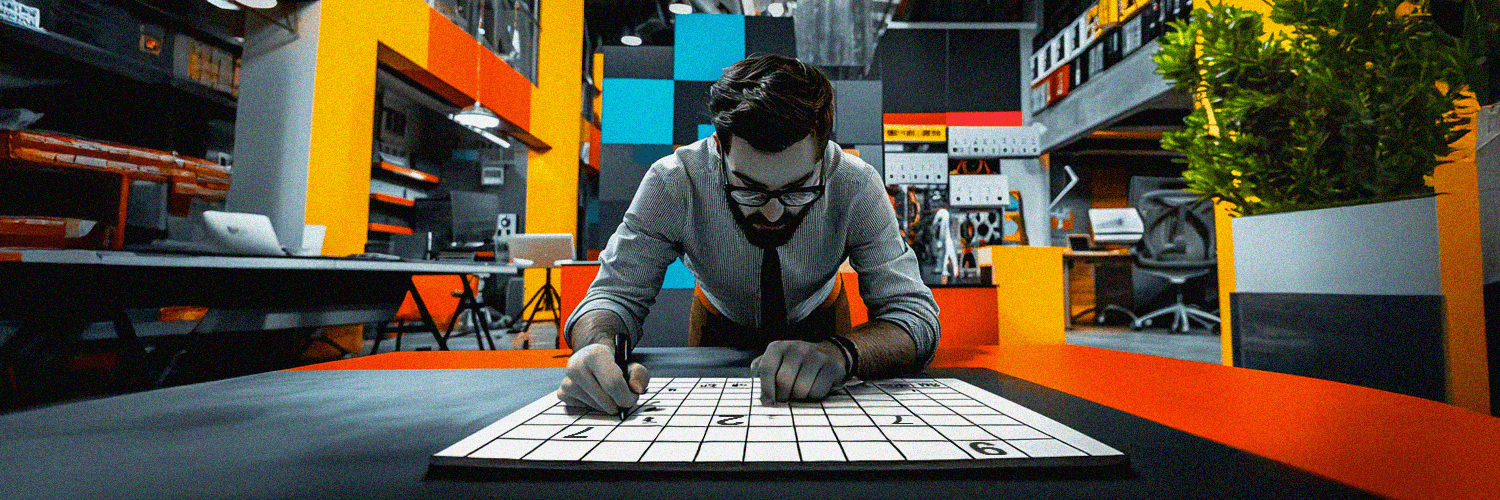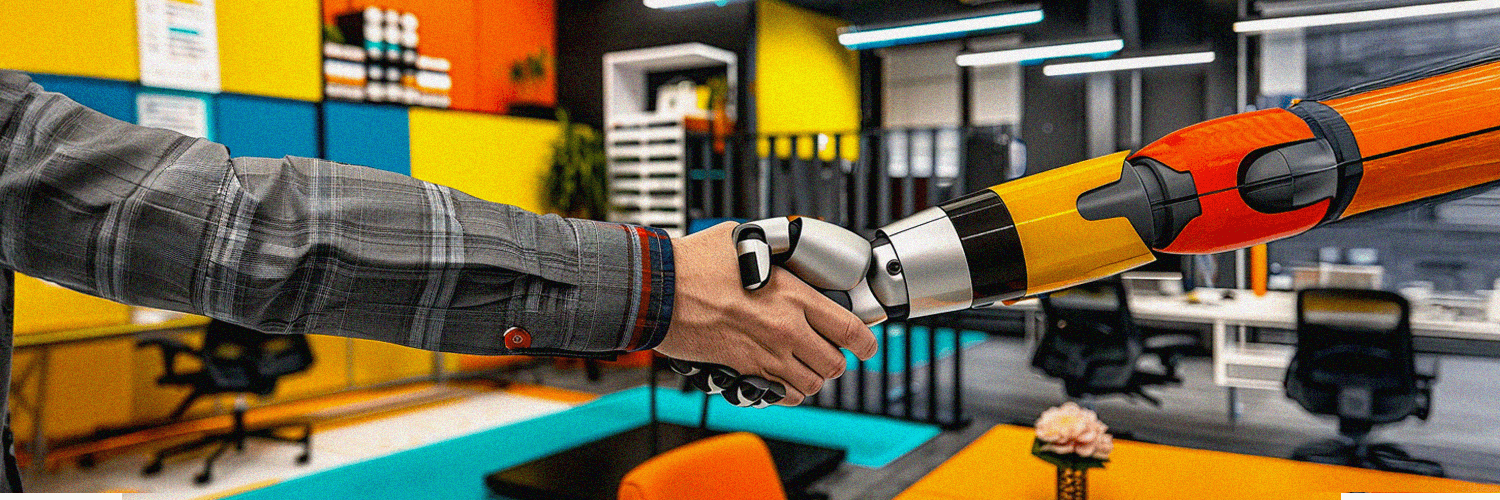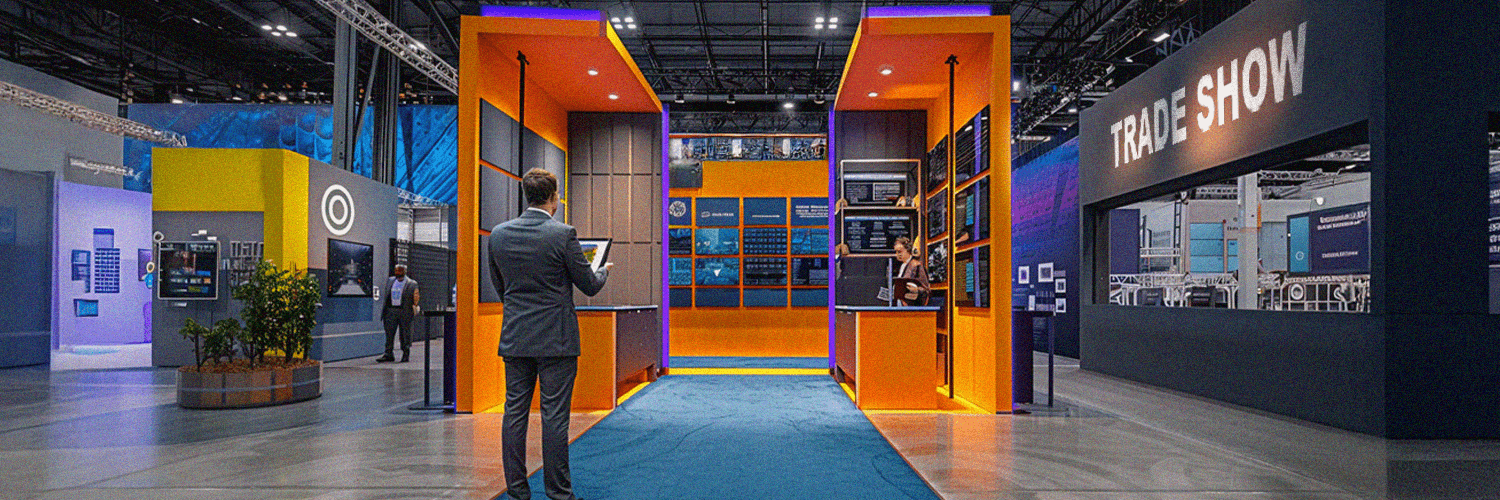Are you thinking about changing the traditional way of working to be more flexible and adaptable? Or are you curious about the recent hot desking trend and want to know more? If so, you're in the right place. In this discussion of the advantages and disadvantages of hot desking, we will explore the potential benefits and challenges, taking your understanding from novice to knowledgeable.
TL;DR:
- Hot desking transforms fixed workspaces into flexible, first-come-first-served work environments.
- Advantages include suitability for hybrid offices, improved space utilization, cost savings, increased collaboration, and productivity.
- Disadvantages encompass hindering a sense of belonging, less personalization, lack of privacy, distractions, and hygiene concerns.
- Successful implementation of hot desking seating arrangements requires clear policies, adequate resources, open communication, and feedback.
- Hot desking technology tools like reservation systems, cloud-based platforms, digital signage, and ergonomic equipment can maximize its advantages.
- Deciding if hot desking seating arrangement is right for your company depends on work culture, structure, and employee preferences.
What Is Hot Desking?
Let's begin by breaking down the concept of hot desking in simple terms. Hot desking transforms traditional, fixed workspaces into flexible environments with no assigned seats; it's a first-come-first-served approach. Think of it like a game of musical chairs where employees switch desks instead of sticking to their usual cubicles or corner offices.
Hot desking is seen as a symbol of hybrid work culture, designed to adapt to the changing needs of businesses. It encourages flexibility and agility. This shift is driven by technological innovation to make operations more efficient and enhance team communication.
However, as with any innovation, there are challenges associated with hot desking. But before we delve into them, it's important to explore the advantages it offers.
How Is Hot Desking Different From Hoteling?
Hot desking and hoteling are flexible seating arrangements, but they differ in how desks are used and managed.
With hot desking, employees can choose any available desk on a first-come, first-served basis without reservation. This allows for a more spontaneous and flexible setup, ideal for those who thrive in a dynamic environment. In contrast, hoteling requires workers to book a specific desk or workspace in advance, similar to reserving a hotel room. This system provides more predictability and organization and ensures that employees have a designated space when they arrive.
While hot desking encourages mingling and adaptability, hoteling offers more structure and better suits teams or individuals who prefer a consistent workspace.

Diving into Different Hot Desking Office Arrangements
In case you're wondering what is a hot desking office, it's simply an office arrangement where employees don't have assigned permanent desks. Instead, unassigned desks are shared according to need and availability. Now, let's examine different ways to set up such an environment.
Comparison: First-Come, First-Served vs. Reserved Desks
The first-come, first-served model is perhaps what most people envision when they think about hot desking. As its name suggests, employees seize available desks as they come into the office daily.
On the other hand, reserved desk setups are more structure-oriented. In this arrangement, although there aren’t fixed seats for everyone, employees can book specific workstations ahead of time based on their scheduled tasks or preferences.
Both approaches have unique appeals and potential snags—one offers utter flexibility while potentially leading to chaotic mornings, while the other assures planned use but might lack spontaneity.
Exploring Assigned Seating, Office Neighborhoods, and Activity-Based Workspaces
Apart from these traditional models of hot desking systems, further alternatives offer even greater nuance.
Assigned seating takes the form of rotational assignments, with employees having designated seats for varying periods depending on their project duration or team requirements.
Contrarily, the office neighborhoods strategy divides the workspace into zones for individual teams, promoting greater inter-team collaboration while maintaining intra-team connectedness.
Activity-based workspaces, yet another dynamic model, create distinct areas for different tasks, such as brainstorming sessions, silent work, and informal interactions, thereby ensuring optimal workspace use.
Are Hot Desks a Good Idea? Advantages of Hot Desking
Embracing the concept of hot desking comes with its set of advantages, reshaping traditional office dynamics and promoting efficiency and flexibility within the workplace. In this section, we'll delve into the key benefits that make hot desking an attractive option for many organizations.
Suitable for Hybrid Offices
The first striking advantage of implementing a hot desking system is its suitability for hybrid offices, which offer a mix of remote work and on-site time. As more companies transition towards flexible working models post-pandemic era, this setup can be ideal for employees who divide their work hours between home and office. It ensures that office resources are not left unused while providing a workspace when required.
Improved Space Utilization
Another significant advantage ties directly to space utilization efficiency. Traditional static office layouts often result in under-utilized spaces because only some employees are always present. With hot desking, you can utilize your workspace better by allocating seats only to those physically present in the office on a given day.
Cost Savings
Next comes cost savings - one of the core benefits of hot desking. The reduction of fixed desks translates into less square footage needed, which results indirectly in lower rent payments. Additionally, utilities and maintenance expenses will decrease as fewer resources like electricity and cleaning services become necessary.
Increased Collaboration
Another compelling case for this model is increased collaboration among employees. By moving around the various departments within the organization, team members get exposed to fresh perspectives and broaden their understanding of other roles within company operations.
Productivity and Creativity
Hot desking could potentially boost productivity levels by catalyzing collaborative efforts. Fresh environments stimulate creativity; thus, having different neighbors daily promotes innovative thinking and idea exchange.
Tidier Office Spaces
A surprising perk of this system is cleaner, tidier office spaces. Since no one has a dedicated desk, employees are encouraged (or required) to clean up their workspaces at the end of each day, leaving a clutter-free environment for the next person.
Equal Opportunity for Remote Workers
Especially important in today’s working culture is the equal opportunity that hot desking offers remote and flex workers. Rather than being consigned to whichever desks are available when they come into the office, hot-deskers have access to different parts of the workspace on different days.
Attracts Talent
Hot desking can be an attractive draw for prospective talent. Many skilled professionals value flexibility and diverse experiences in their workplaces. Implementing such a progressive policy could favor attracting new talent and retaining existing employees.
Higher Employee Engagement
With employees regularly interacting and collaborating in shared spaces, hot desking fosters a sense of community and connection among team members. This increased engagement can improve morale, stronger teamwork, and more vibrant workplace culture, ultimately benefiting employees and the organization.
Scalability
Hot desking is scalable - it can quickly adapt to organizational size and structure changes. Whether a company is growing rapidly or downsizing, hot desking can accommodate these shifts without requiring major office reconfigurations. It ensures that office resources and space allocation can be efficiently adjusted, making it a cost-effective solution for businesses with fluctuating workforce needs.
Hot Desking Success Story: Dedalus
At the end of 2021, Dedalus, the leading healthcare IT provider in Europe, relocated its office in Vienna to a new building with a smaller office space. While downsizing can save costs over time, it can be challenging when you're accustomed to a larger office space.
Dedalus quickly discovered it firsthand because, at the same time, the company was actively recruiting, and the team rapidly grew from 200 to 300 employees.
What to do when you do not have enough desks for everyone?
Dedalus decided to get started on hot-desking. For that, they needed a reliable and easy-to-use desk booking solution like YAROOMS to help create a flexible workplace.
Disadvantages of Hot Desking
It's fair and balanced to discuss the disadvantages of hot desking alongside its beneficial aspects. Despite the numerous advantages, companies should consider some potential downsides before adopting a hot desking system.
Can Hinder Sense of Belonging
One major concern is that hot desking can hinder employees' sense of belonging, considering they don't have a fixed place to call their own. Without personal space at work, workers may feel less connected to their team or company. This lack of connection often leads to reduced employee satisfaction and engagement, which may negatively impact productivity levels - ironically defeating one of the key objectives behind implementing hot desk office setups.
Less Personalization
Gone will be the days when you could display family photos on your desk and keep your favorite mug next to your machine if the company switches to a hot desking office. As everyone shares desks in such environments, employees usually aren’t allowed nor encouraged to customize their workspace as it has to remain neutral for others to use. The lack of personal touches might make spaces seem sterile or impersonal to some.
Lack of Privacy
In hot desking setups, the lack of privacy can be a notable issue as employees frequently share open workspaces. Conversations and activities may be overheard, making it challenging to have confidential discussions or concentrate on tasks requiring focus. To address this, some organizations provide private meeting rooms or phone booths, but it remains a concern in shared office environments.
Difficulty in Finding Space
In some freshly set up hot desking offices, employees may experience difficulty in finding an available workspace. However, this problem can be mitigated by implementing the right desk booking solution. Such a solution allows employees to reserve workspaces in advance, ensuring they have a designated spot when needed. This reduces the hassle of searching for a desk and enhances the overall efficiency and convenience of the hot desking setup, making it a more manageable and user-friendly experience.
Distractions and Disruptions
Hot desking office spaces can sometimes become chaotic, with constant movement affecting concentration levels. As employees shift around trying to find an available desk each day, it's not difficult for distractions to continually occur, disrupting workflows and causing efficiency losses.
Loss of Structure and Hierarchy
Traditional offices often have physical signs denoting hierarchy—corner offices or larger desks are reserved for higher-level managers. In contrast, this implicit structure goes out the window in a fully equalized shared space system like hot-desking — anyone can occupy any space. While some see this equality as a perk – seniority no longer gating prime real estate – others feel discomfort due to this loss of structure.
Hygiene and Wellbeing Issues
The very nature of hot desking, where multiple people use the same workspace at different times, raises valid concerns about cleanliness and potential health risks - especially during flu seasons or a pandemic. In addition, it can lead to discomfort if diverse employees share the same desk—what’s an ergonomic setup for one may not be comfortable for another.
Resistance to Change
As humans, we are creatures of habit. Many employees appreciate predictability: known neighbors, knowing exactly how their chair adjusts or where best to place their second monitor. A shift towards hot desking means altering fundamental routines and can be met with resistance. Especially amongst those more tenured workers accustomed to traditional workplace norms & those less flexible regarding working hours might find this change challenging.
Security Concerns
Employees may inadvertently or intentionally access sensitive information on unattended desks, compromising data security in a hot desking office. Organizations often implement strict security protocols to mitigate these concerns, encourage employees to secure their belongings, and employ surveillance measures to safeguard confidential data and materials.

Overcoming Hot Desking Challenges from an Employer’s Perspective
Integrating hot desking solutions into your workspace can be overwhelming at first. It prompts a series of concerns about managing desk allocation, maintaining team cohesion, and reducing distractions in a dynamic environment. As an employer, it is essential to implement measures that address these challenges head-on.
Facilitating Desk Sharing with a Modern Reservation System
One of the paramount advantages of hot desking is its practicality - employees do not need to own a dedicated space but instead freely choose where they want to sit on any given day. To realize this advantage fully, you need the proper tools to facilitate seamless desk sharing.
Some popular hot desking solutions include desk booking software and mobile applications that allow effortless desk reservations. Booking software like Yarooms Workplace Experience Platform hold information about workstation availability in real-time, and even show it on an interactive floor plan, reducing manual monitoring efforts and promoting transparency in your hybrid workplace.
Promoting Team Cohesion While Adapting to Flexible Workspaces
Adhering to strict traditional seat allocations inhibits spontaneity— an essential ingredient for fostering team creativity and collaboration. One major advantage of hot desking, as opposed to hoteling, is its naturally flexible design, which encourages random encounters among different members, leading to unexpected collaborations.
However, maintaining team cohesion amid such a fluid environment can be challenging. Regular team activities, an open communication channel, and performance-based collaborations can help preserve that sense of unity within the team while thriving in this new working format.
Creating Thoughtful Floor Plans to Minimize Distractions
Office layout design significantly impacts employees' productivity levels— making it one of the key challenges many employers face with hot desking implementations.
Creating thoughtful floor plans incorporating communal areas for spontaneous discussions—zones for head-down work, phone call booths, and casual relaxation spaces—is pertinent. Each area should cater to different working styles while minimizing distractions and noise.
This careful placement helps establish an intuitive hot desking environment, where every space is optimized according to its functionality without hindering staff productivity or comfort.
Providing Personalization Opportunities for Employees
Under a hot desking policy, personal lockers or mobile pedestals could provide employees with a sense of ownership despite not having fixed desks. This allowance creates the perception of 'personal space' where individuals can keep their essentials and personalize them to their liking—not just contributing to maintaining orderliness but also fostering employee satisfaction within your organization's system.
Overcoming these challenges may take time, yet when implemented effectively, the advantages of hot desking manifest in reduced costs, flexible operations, improved collaboration, and a potential reduction in office operating costs by up to 30%. Rest assured that these steps address common issues and have successfully led various businesses across industries to incorporate effective hot desking solutions.
Implementing Hot Desking Successfully
In maximizing the hot desking advantages, a successful implementation strategy is pivotal. Here’s how to create one:
Establish Clear Policies and Guidelines
Regardless of how you perceive hot desking benefits, clear guidelines carry immense importance. Employees should have a detailed understanding of hot desk office policies to navigate this new work environment successfully.
Alongside stipulating "what is hot desking" in layman's terms, these policies should account for privacy concerns, scheduling hurdles, and conflict resolution techniques. This approach ensures everyone understands the system, preventing misuse while promoting fairness in space allocation. Remember that clarity can be instrumental in reducing disruptions - a typical disadvantage of hot desking.
Provide Adequate Resources and Support
Shifting to a hot desking system shouldn't deprive staff members of necessary resources. As a leader, ensure availability of access to essential equipment such as desks or chairs as well as technical amenities like laptops or reliable Wi-Fi.
Employees should always feel safe and equipped with adequate tools within a hot desking office space. Providing effective IT support also mitigates shared hardware or software challenges—thereby optimizing operations within this innovative workspace layout.
Moreover, providing training so employees can safely navigate potential issues related to the typical cons of hot desking, such as hygiene or personal property management, can go a long way in mitigating problems early on.
Encourage Open Communication and Feedback
Open dialogue plays an integral role in avoiding resistance to changes brought by transitioning into a tweak like hot desking (which might not suit everyone). Indeed, adopting any new process requires careful integration mixed with patience—and implementing hot desk workplaces is no different.
Seek tangible reviews about how various team members feel about adapting to this new system. Are employees able to work effectively, or are they discomforted by distractions, a recurring disadvantage of hot desking? Is the change sparking creativity, or are teams finding it disturbing their traditional workflow?
The goal should be openly handling streamlined feedback while also showing readiness in addressing concerns flagged by colleagues concerning this radical change.
By focusing on these essential aspects when implementing hot desking, your business can lean more into the advantages than disadvantages of this revolutionary office trend.
Unlock the Advantages with Hot Desking Technology
Now, having explored the meaning, pros, and cons of hot desking, let's focus on unlocking its advantages with the right tools. Technology maximizes productivity and employee satisfaction in a hot desking office.
Firstly, consider hot desk booking solutions that assist employees in locating available workplaces within your hot desk office. These apps can depict the real-time availability of desks, drastically reducing time wasted looking for an open spot.
Implementing booking software can also help manage demand for spaces during peak hours. Desk reservations made in advance allows staff members to plan their workday effectively around meetings or collaborative projects.
Investing in cloud-based platforms is another crucial step in promoting efficiency in a hot desking office space. Applications like Google Workspaces or Microsoft Office 365 encourage collaborative working without being tied to one device or physical location.
Furthermore, introducing digital signage would be beneficial, too, as these signs provide helpful guidance around the work environment. They allow employees to identify free spaces quickly and get background data about their chosen desk: who last used it, when it was last cleaned, etc.
Last but not least, think of workplace ergonomics! Adjustable equipment such as standing desks or comfortable chairs make for healthier workers and thus instigate increased productivity levels.
Equipping your company with cutting-edge technology designed specifically for hot-desking environments, you offer assistance and demonstrate your commitment to your workforce's well-being. Ultimately, this ramps up overall morale, driving stronger results from all parties involved - unlocking the true potential of what a hot desking system could do.
There's little doubt that if approached correctly, hot desking provides an effective solution aligning organizational needs with modern employee expectations – making workplaces future-fit.
Hot Desking FAQs
Navigating the maze of modern office configurations can be daunting. In this era of technological advancement, a fresh alternative has emerged: hot desking. To help you determine whether it's the right fit, we'll address some frequently asked questions about this trending concept and highlight its pros and cons.
Is Hot Desking Right for Your Company?
As an innovator and a forward-thinking professional, you must question whether the hot desking system is right based on your company's specific needs. Identifying the suitability of this approach for your organization largely depends on your work environment, work model and structure, workforce size, nature of tasks performed by employees, and even their personal preferences.
Some companies thrive in a dynamic environment where people move freely and interact with various team members. In such cases, adopting the concept of hot desks can boost flexibility and promote cross-departmental collaboration. Notably, tech-focused start-ups or organizations rooted in creativity benefit considerably from this setup.
There are also cases where organizations witness a trend of employees preferring remote work or working only part-time at office premises. An effective way to lower costs while accommodating this hybrid work model would be through implementing hot desking.
Yet it's essential to remember there may not always be a perfect alignment between what hot desking means and how every aspect of your organization operates. Industries with strict privacy requirements or frequently dealing with highly sensitive information might find this method challenging.
While embracing hot desking reduces operational costs and improves space utilization (some attractive advantages), you must also consider potential disadvantages like impacts on employee sense of belonging or increased distractions.
Determining whether the model aligns with your business' culture involves open communication - seeking opinions from staff members about changes affecting their daily routine should never be overlooked. If hot desk office settings sound disruptive instead of productive for most employees, it might not be worth pursuing in the short term.
Is Hot Desking Good or Bad?
Hot desking, just like hoteling, is neither inherently good nor evil. Instead, its suitability hinges upon the unique needs and culture of your organization.
There are numerous potential hot desking benefits to consider:
- Space-Saving Efficiency: With hot desking, there's no need for dedicated physical spaces for every employee; shared workspaces can create substantial cost savings.
- Flexibility: This setup offers flexibility, enabling employees to select workstations that best suit their daily tasks or moods, which enhances productivity and improves hybrid work experience.
- Encourages Interaction: It allows workers from different departments to interact, fostering creativity and collaboration.
However, there's always another side to the coin:
- Lack of Personalization: Personalizing desks becomes tricky since they aren't assigned permanently.
- Logistical Challenges: Without proper management systems and booking software, finding available hot desks could become a frustrating experience for employees.
Simply put, hot desking might be excellent for some companies while proving less beneficial for others.
Is Hot Desking Good For Mental Health?
The impact of hot desking on mental health is slightly more complex as it heavily depends on individual personalities and company policies.
For extroverts who thrive on interaction and dynamic environments, hot desking can potentially boost mood levels and foster social relationships at work—key aspects contributing positively to mental well-being, according to many psychologists.
Conversely, introverted individuals may find the lack of privacy distressing. The constant changes brought about by unassigned seating and flexible work might cause anxiety or feelings of instability.
Additionally, a poorly managed hot desking system might lead to employee dissatisfaction and increased stress levels, which isn't good for mental health. Hence, employers implementing hot desks must provide the necessary guidance and resources to ensure the smooth operation of this workspace arrangement.
Therefore, while hot desking can sometimes boost morale by promoting teamwork and flexibility, careful implementation is critical to prevent adverse effects on employee mental well-being.
In conclusion, understanding what hot desking offers will aid decision-makers in assessing its potential value or detriments to their workplace. It requires careful consideration to effectively balance practical functionality with employees' welfare.













